Now I must begin with a confession: I have never been to Ireland and I do not personally know any Irish Travellers, but I have always been fascinated by their language. I know that there are some every year in my hometown in Denmark, and most often they are heading north with their caravans. I once saw, on my way to work, a group at Tangkrogen in Aarhus, but when I came back they were gone. As far as I understood, they were sent away by the police.
Irish Travellers are a minority ethnic group. This status was recognised by the Irish State on 1st March 2017. The Equal Status Act refers to Irish Travellers in the following way: “Traveller Community’ means the community of people who are identified (both by themselves and others) as people with a shared history, culture and traditions including, historically, a nomadic way of life on the island of Ireland.” (Equal Status Act, 2000: Pt.1 S.2).
As of 2018, Cant/Gammon is on the Irish State’s National Inventory of Intangible Heritage. The Travellers welcomed this recognition of the language and they hope it will lead to some measures to protect and promote the language.
Their language is very special in several ways. The language has been secret and hidden for many years. No one knows for sure where the language comes from. That stands in contrast to Romani. Romani is spoken by Roma (formerly known as Gypsies). It is clear that the vocabulary of Romani comes from Northwest Indian languages, and for most varieties also grammar: an Indic case system, Indic verbal and nominal morphology. Sometime in the late Middle Ages, they arrived from India in Southeastern Europe. Their origin in India has been confirmed by recent genetic research as well.
But for “Cant” or “Gammon” it is something completely different. It is not an Indian language, nor is it a Celtic language, like Irish. It is a little clearer where the population group comes from than where the language comes from. Irish Travellers do not differ much from the general Irish population in how they look. But they have lived apart from the general Irish population for almost 200 years or longer. They usually marry other Travellers. They cultivate their strong family ties. Incidentally, some have also emigrated from Ireland to the United Kingdom and the United States, and they tend to keep contact also there.
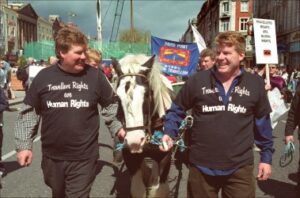
I have just read a new book about Irish Travellers. In the past, I have reviewed some books about other Travellers as well. I think there are many parallels between Scandinavian Travellers and Irish Travellers, even though they do not really have a common history. In Denmark, most travellers have become part of the general population, or they have moved to Sweden. In Sweden and Norway, the ravellers do form a network and a separate group. Their language combines Romani lexicon in a Swedish or Norwegian grammatical frame.
Now I must first say something about the book. Maria Rieder, originally from Germany, has written the book after working in an Irish Travellers Training Center for a few years. She has talked to many travellers, and she has also done more or less formal group interviews, with both men and women (but not mixed), in order to gather knowledge for her dissertation. Based on her experience in that working environment, she has written the book. It is partly ethnographic, i.e. descriptions based on her observations, and partly folk linguistic. Folk linguistics is a branch of linguistics where linguists describe what people themselves know or think about language, and not what scientists claim about the same thing. These views can be quite different.
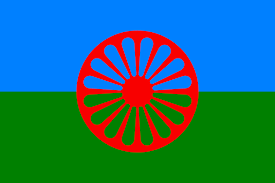
The researcher’s interviews were, among other things, about their language. In the book, the language is always called “Cant”, which is also a word for slang in general in English. Academics have often called it Shelta (a label that Travellers themselves do not know or use), after C.G. Leland, who was the first to write about the language in the 1800s. Irish Travellers call it Gammon or just “the words”. Most interviewees have not had a schooling beyond elementary school, so they are not affected by what has been written by others about their language, or what can be found online. Although quite a lot has been published about their language, however, there are only a few words that one finds quoted throughout the book, in order to respect the supposed secrecy of the language. To show how much Romani and Cant are different, I pass on some words from the book here, adding Swedish Romani (R.)and Welsh Romani and Sanskrit (S.), the Old Indic language.
Cant Swedish Romani Welsh Romani Sanskrit
alemog ”milk” (R. tudd). thud S. dugdhá
beoir ”woman” (R. romni, rani), romni S. ḍōmba ‘human’
corrie ”horse” (R. grai), graj < Armenian
fe ”meat” (R. mass), mas S. māṁsá
feen ”person” (R. manus), manuš ‘man’ S. māˊnuṣa
geg ”to ask” (R. puttja), phučel S. pr̥ccháti
grugra ”sugar” (R. gulipa), gudlo S. guḍá
lakeen ”girl” (Romani rakli, tjei), rakli S. laḍikka
sarc ”field” (R. nita), phuv S. bhūˊmi
tari ”to give” (R. (de(la)), del(a) S. dattá
toom ”good” (R. fäddi, hårta). kuč/ kuško S. ??
The Irish Traveller words are clearly quite different from the Romani and Sanskrit words, and the Romani and Sanskrit words are quite similar. The Romani word for “sugar” comes from an Indian word for “sweet”, and it is actually “sweetness”, but cant grugra comes, as the only word in the list, from English sugar. To hide loanwords, one can use gr- instead of the first consonant of Irish or English words.

Cant is originally a secret language that had a clear function when Travellers moved around the country road in wagons and traded with non-Travellers. Through the languages, the Travellers could identify each other and then easily communicate. In ancient Ireland, these special words were used in an Irish grammatical framework, but in the past century, they are used in an English framework. The same process happened in Sweden and Norway several centuries ago when people began to use Romani words in a Swedish framework.
In the interviews, they say that it is good to be able to use the language to be able to warn each other against threats and danger from outsiders. On the other hand, door-to-door trade is over, and the special language seems to have lost its raison d’être. Many young people are not very interested. It is incredible how much the experiences of Irish Travellers told in the book are similar to what Resande (Rejsende) in Scandinavia have experienced.
The vast majority of Irish Travellers now live in houses, while only a few still travel around, and at that only a part of the year. Irish Travellers look nostalgically back to the old days when they traded with the locals and when they had good relations with the peasants. Now they often feel discriminated against. Some hide that they are Travellers. It is getting harder and harder to travel around, and trading with the “settlers” (as they call non-Travellers) is almost impossible. It is only a few years ago that the Travellers were recognised as an ethnic group in Ireland. They have strong family ties and they want to live close together. They have their own language, but the young people are not so interested in it. The old people can also see for themselves that the language has lost much of its function. There are also more and more mixed marriages between Travellers and settlers. Their culture is important to them, but they can also see that much has disappeared and some additional things are disappearing at the moment. There are several parallels between Scandinavia and Ireland. The fact that Scandinavian and Irish history are so similar is probably due to developments in European society in the last century: better roads, more stores where isolated farmers, now motorized, can buy everything they need, and less need for ambulant trade and seasonal work – much of that taken over by machines. And at the same time, increasing discrimination from the population and tighter laws against traveling groups and regulations against door-to-door sale.
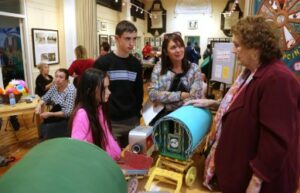
I found it an interesting book to read. The author writes well and clearly, and the information about Irish Travellers is interesting. I am an academic myself, and the academic part is also in order. The book can be recommended. There are no secrets in the book as she does not publish their names and they have given permission for the interviews.
However, there is a major drawback and that is the price tag. The book is incredibly and outrageously expensive. But one can hopefully get it cheaper. I bought it for 10 pounds sterling in the sale, an event that the publisher usually repeats every year in December.
For those who do not write books, I must add that one does not get rich by writing academic books. The author usually does not share in the winnings. These go to the publisher and their shareholders. And you only get a percentage when you have sold many copies. In return, many academics have a job at the university, where they are paid to write books and articles. Only very rarely do they get paid by publishers to write articles or books.
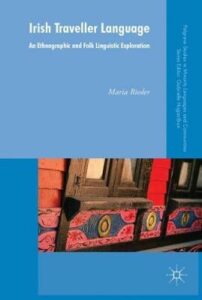
Rieder, Maria. 2018. Irish Traveller Language. An Ethnographic and Folk-Linguistic Exploration. Palgrave MacMillan. ISBN 978-3-319-76714-7
https://www.palgrave.com/gp/book/9783319767130
For more information on Irish Travellers and Roma in Ireland, see the website www.paveepoint.ie
Peter Bakker is a linguist at Aarhus University. His research interests include new languages, such as the language of the Irish Travellers, with words of unknown origin embedded in an English, and formerly Irish, frame


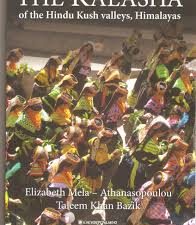





Hi I am an Irish Traveler. I did leave “sort of ” when I was 21. At least my location changed I went to US and integrated into the American society but was still accepted by my relatives. We were one of the first settled Irish in the 60’s and first to be educated. I took education more serious that the other 8 siblings and did graduate college. I’m 58 now I find some of the Gammon has similarities with Gaelic at least some of the words. Travelers also use old English terms. Like “I’m afeard” . They also refer to catholic blessings like “wrath of God” or “God bless the mark”. I wish I knew more about my culture but nobody does. I think prob from the 16th century Irish Rebellion years.